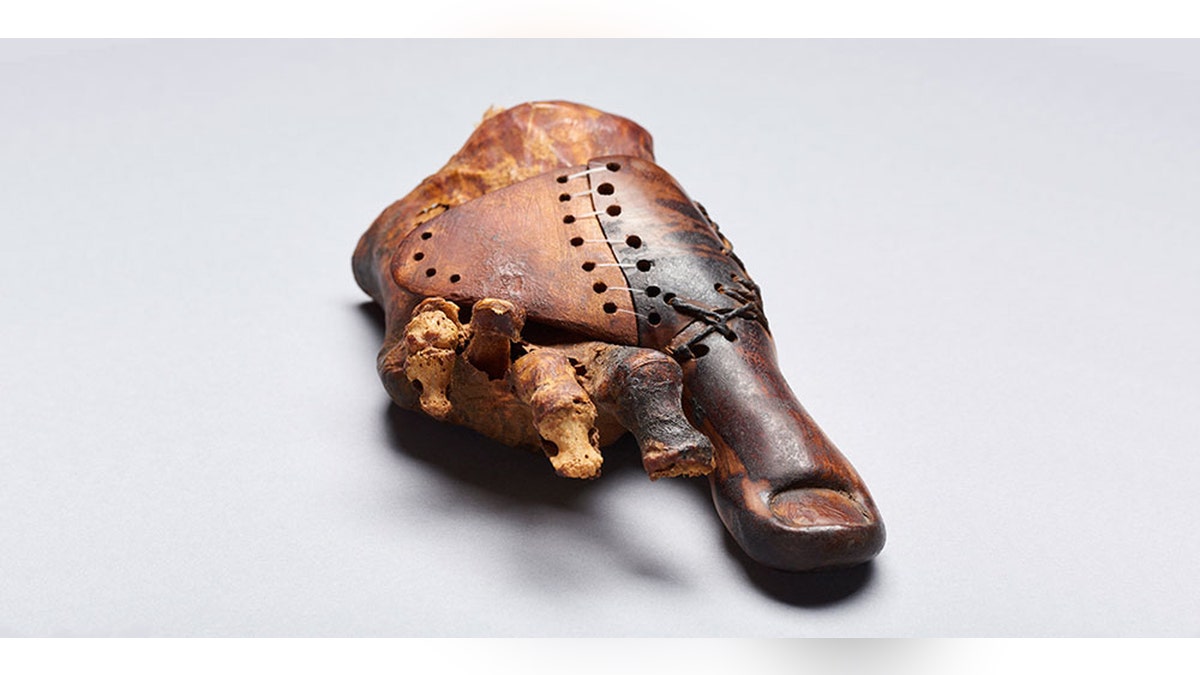
(University of Basel, LHTT. Image: Matjaž Kačičnik, matjaz.kacicnik@amis.net ) (Matjaz Kacicnik matjaz.kacicnik@amis.net )
Think losing a toe in ancient Egypt meant you'd be forever without one? Not so, at least in one case. Egyptologists from Switzerland's University of Basel have since 2015 been studying what a press release calls an "ancient Egyptian elite cemetery" near Luxor, and one of its finds was small but big: one of the oldest prosthetic devices ever found, which served to replace the right foot's big toe and was made with incredible skill.
The 3,000-year-old prosthesis was discovered in the upper-class tomb of a priest's daughter at plundered burial site Sheikh 'Abd el-Qurna and has now been re-examined. Not only is it attractive and functional, but "the mobility of the prosthetic extension and the robust structure of the belt strap" show it was made by an artisan who was "very familiar" with the human form.
At the Conversation, Jane Draycott of the University of Glasgow notes prostheses have also been found in ancient Greece, and advancements in this field likely followed war as soldiers with missing extremities returned home.
It isn't clear what happened to the priest's daughter, but researchers believe her toe was amputated and a pricey prosthetic fitted in its place. Using microscopy and X-rays, they determined the wooden toe was actually refitted at least three times, per UPI.
It shows "she had a certain living standard," researcher Andrea Loprieno-Gnirs tells Swiss Info. Ancient Egyptians "often wore sandals, so you can imagine that a well-formed foot was important," she adds, calling the prosthetic an "extraordinary" and "sensational find." (These mummy legs might belong to a royal.)
This article originally appeared on Newser: Egyptologists Examine 'Sensational' Discovery
